#joan lady of wales
Explore tagged Tumblr posts
Text
HI me again back with another Welsh law bonanza. For some reason I don't know, u guys really liked the Gwenhwyfar divorce post I did a few weeks back, so allow me to shed some light on how divorces worked as well as marriage payments, and the role of a queen in Welsh law. (Which doesn't have much on it but is FASCINATING.)
Also, I am SUFFERING from cramps so I apologise if I ramble.
First off, Marriage Laws.
So, as previously discussed there were two ways a woman could marry: she could either be given by her family, or she could elope. Now, a woman who eloped would still be entitled to the same monetary payments as a woman who was given in marriage by her kin,
So, the Dues Payable are as follows: Amobyr, Cowyll, Agweddi, Gwaddol, Argyrfreu, and Wynebwerth.
I'm gonna cover Amobyr and Cowyll today, as well as do a lil write-up about Queenship so yeah.

It's a maiden fee! Now, this and the Cowyll are BOTH maiden fees, however, they differ as Cowyll - and we'll get onto it later - is a fee maybe to the lady herself. Sort of a wedding morning gift, I guess. 'Sorry I slept with u, or not, have some money.' Which, is extremely crass.
The Amobyr was fixed to a lady's status and it goes from King, Chief Bard or Storyteller, Chief Officers (so a Distain, which is what we Welsh would call a Seneschal), Minor Officer's daughters, Uchelwyr (so knights or lords), and then your middling noblemen, to peasants, foreigners, and slaves.
It's essentially equal to the revenue the father would get for his land, but EVERY SINGLE WOMAN would get it, regardless of status. High-born or low. The amount's payable regardless of whether you have one penny or seven thousand.
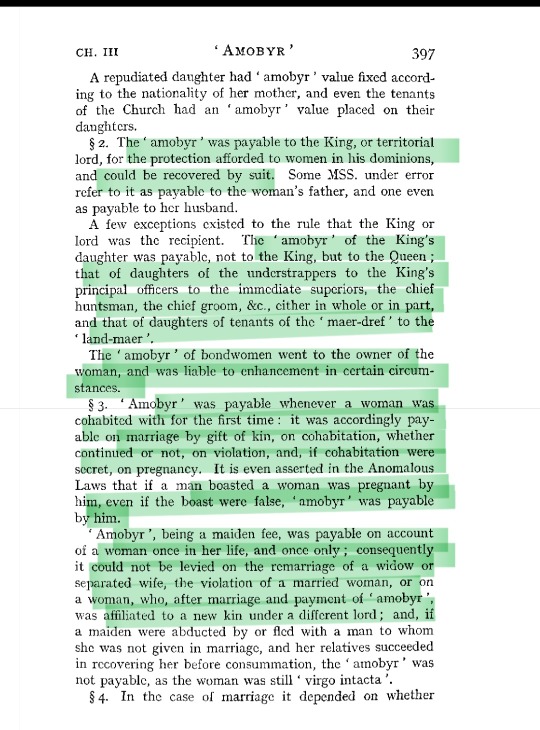

Now, amobyr could be recovered by suit as it was payable to the King and was essentially like protection money. If you made off with somebody's amobyr you were in BIG TROUBLE. HOWEVER, and I really love this fact, the King's daughter's amobyr would be payable not to him BUT TO THE QUEEN, as well as other daughters of high rank like your Pencerddau, chief groom, etc.
Amobyr was payable once a couple had cohabited for the first time, and even had to be payable if a man boasted that he'd shagged a woman and gotten her pregnant, but actually hadn't. Presumably because a) these laws are BIG on honour bonds and things and because you'd lied you'd tarnished that woman's honour and your own, and b) you'd kinda claimed that Lady as yours because you've made her unchaste.
Because it's a maiden fee it - like the Cowyll ' could only be paid ONCE. No more, no less. If you were a widow or wanted remarry, you can't get the amobyr again. Also, if you'd eloped with a dude and your family had caught you before you'd consummated your relationship they didn't have to pay cuz you're still a virgin. Also, if you were raped then the rapist had to pay amobyr to your family in recognition of that.
Finally, a lady who'd had a fling which had resulted in a bastard child* but she hadn't declared who the father was, then she was responsible for the amobyr. However, if she HAD declared who the father was then he had to pay the amobyr instead.
The Cowyll, as I've already said, is a personal payment to the lady that's made on the first morning after marriage.

Now, in North Wales it's always given as money even if you're a King's daughter, BUT if you're in the South then you get la lovely chunk of land. So if you married a prince of Gwynedd, bad luck, just money for u. If you married a Prince of Deheubarth then you are QUIDS IN! (THAT'S YOURS FOR LIFE BABYYYYY)

(Ignore the Agweddi for today. Or don't. Think of it as a tantalising glimpse into the next law I'm gonna cover.)
Cowyll is both paid to just married women AND those who were violated against their will. The wife / lady who had been violated had the right to specify what they wished for their cowyll to be in service of. If she didn't then it just went on stuff for the couple, so I'd imagine whatever the medieval equivalent of IKEA flat pack furniture would've been, that would've been what they'd have chosen.
Also, it's kept entirely separate from the husband's property so he Could Not pinch from it, or use it in service of himself. You couldn't even be deprived of it if you'd had an affair or did any naughty business. That's YOUR MONEY AND BY GOD YOU CAN KEEP IT. Even if you divorced your husband or he you, you would be allowed take your cowyll with you.
Now, finally, QUEENSHIP.
(Particularly handy if you are, like me, doing an Arthurian-inspired, Welsh-set novel and you GOTTA KNOW WHAT GUINEVERE DOES.)
There is not a lot on it because it isn't something that's studied that much (idk why. Wales has tonnes of cool Queens even if they didn't become regent) but we make do with what we can!
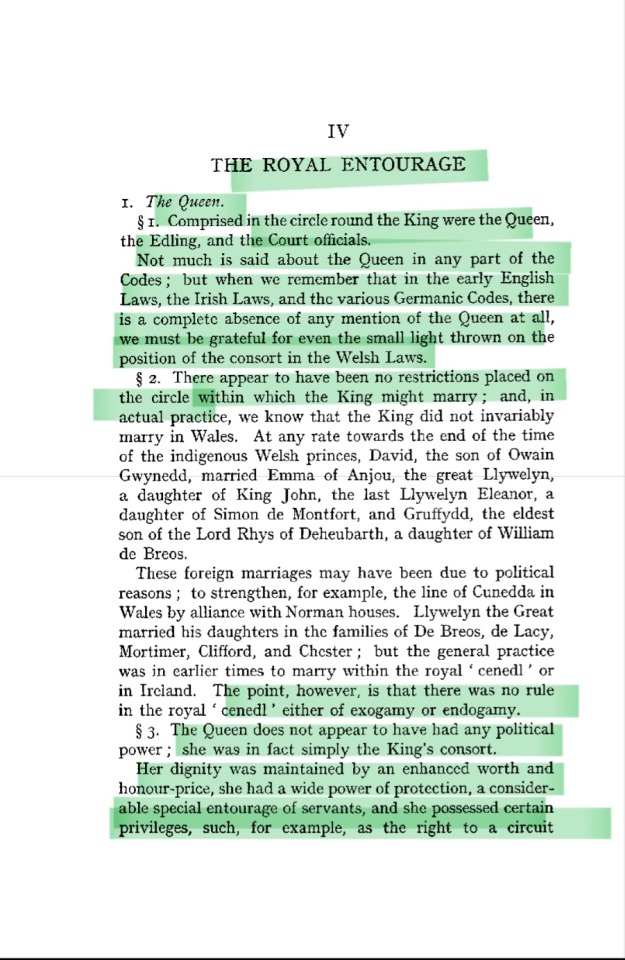


You, as King, could marry ANYBODY (Within reason, nobody is marrying a peasant girl) within what would be termed your Cenedl (that's your family.) or out of it.
Kings, we know, often married their first cousins, or second cousins to keep the balance of power within Wales (you gotta remember Wales wasn't united back then! Gwynedd, Powys, and Deheubarth fuckin squabbled like dogs over bones, and Do Not get me started on the littler kingdoms like Arwystli or Senghenydd.)
Seriously, Gwenllian ap Gruffudd ap Cynan (Gwynedd) eloped with Gruffydd ap Rhys (Deheubarth) and they were like distantly related. Or, Gwenllian's brother and v famous boi, Owain Gwynedd married his first cousin, Cristina (and, in doing so, ensured that after his death Gwynedd would have a power vacuum because of squabbling that wouldn't be sorted until Llywelyn Fawr took the throne and overthrew his uncles. It's always fuckin Gwynedd. Even Gwenllian's son, The Lord Rhys, married one of his first cousins, who was also named Gwenllian.)
*Gets slapped with a wet fish* Sorry, I was rambling.
Now, kings did also marry for political alliances. Gruffudd ap Cynan himself married Angharad ferch Owain (can u sense a theme with the names?) because she was from a well-off, noble family who had ties to the Anglo-Saxons when Gwynedd was in a bad spot with the Norman's. Llywelyn Fawr married Joan, the illegitimate daughter of King John of England, when relations became... tense, shall we say.
So, lemme go over some stuff regarding laws real quick before I tell u why I've highlighted these three ladies. (Cuz they're fun and I'm in love with them- uh, you what?)
So all the Codes (North, South, Mid) attach the following to the Queen: a steward, priest, chief groom, door-keeper, and a handmaiden. In Gwynedd she was also given a page, a separate cook (presumably because of poisoning attempts), and a candle-bearer (would LOVE to be that. No joke.) Whereas in Deheubarth she was given a groom of the rein, a sewer, and a footholder. (For all u lovers of the Fourth Branch of the Mabinogi out there this is a win for u.)
The line of Cunedda which (and, fuck me, I can't believe I'm saying this) IS BASICALLY ALL OF THE KINGDOMS OF WALES allowed for transition of royal dignity through a the female as well as the male. That means u could contest ur throne using your mam's blood and status as well as your dad's. Owain Glyndŵr, as I have previously mentioned, did this when he started his rebellion against Henry IV, as his mother descended from both the houses of Gwynedd and Deheubarth and his father descended from Powys. Truly, the people's Prince.
Now, a queen had her own privy purse (Go her), and one-third of the income the king received went to the Queen for her personal use. She also received land grants that went directly to her.
Now, finally, why tf did I highlight those three Queens that I spoke about earlier? Okay, so, Queens couldn't be regents, BUT they absolutely could and did use their power in any way they could.
Angharad ferch Owain was the mother of Owain Gwynedd, Gwenllian, and Cadwaladr. Owain Gwynedd ruled Gwynedd after his dad died in 1137 and led Gwynedd to become Wales' most successful kingdom at that time. He is also the reason why the Prince of Wales is called the Prince of Wales. ANYWAY. He and Cadwaladr had a falling out in 1143 and Angharad, not liking the way Cadwaladr was being treated, took his side. (Dunno why, he killed her step-grandson, Anarawd. Like, Angharad pls. Priorities, del.)
So, Owain ordered his son, Hywel, (yes him of bardic fame) to BURN DOWN Cadwaladr's castle in Aberystwyth. Cadwaladr, enraged, hot-footed it to Ireland where he and the Vikings invaded Gwynedd in an attempt to make Owain give him his lands back.
Angharad supported Cadwaladr by allowing him to beach his forces in her lands of Abermenai in Ynys Môn (Anglesey.) and also tried to intercede on her son's behalf with his brother. Anyways, the brothers were reconciled (for a brief period. Cadwaladr was aligned with the Normans so he remained a thorn in his big bro's side.) and Angharad lived until 1162. Her death led Owain Gwynedd into a melancholic spell.
Gwenllian ferch Gruffudd ap Cynan waged war against the Normans during the Great Revolt. Fighting against the Normans was very much a family affair for, you see, her brothers Owain (previously mentioned cousin-marrier) and Cadwaladr also waged war against the Normans at this time, and their dad, Gruffudd ap Cynan also fought against them SO HE COULD BECOME KING OF GWYNEDD. After her husband left Deheubarth to go and plead with her father for troops and aid men flocked to her and they waged a guerrilla war against the Normans until 1136.
This pains me to say but a Welsh lord betrayed Gwenllian after the Normans - seeking to win back the territory that Gwenllian and Gruffydd ap Rhys had recovered - waged war against them. She and her two eldest sons, Morgan, and Maelgwn died. Morgan in battle, and Maelgwn and Gwenllian were beheaded at Castell Cydweli.
After her death, South Wales rose in rebellion against the Normans. Her brothers, once word reached Gwynedd, invaded Norman-controlled Ceredigion (which was Deheubarth's territory.) and won back Aberystwyth, Llanfihangel, and Llanbadarn. The Welsh battle cry for many years was 'Dial Achos Gwenllian!' Revenge for Gwenllian.
Finally, Joan, Lady of Wales. She's referred to as Siwan in Welsh. She was the daughter of King John (as previously said.) She often mediated between her father and her husband, Llywelyn Fawr. The Brut y Tywysogion writes: 'Llywelyn, being unable to suffer the king's rage, sent his wife, the king's daughter, to him, by the counsel of his leading men, to seek to make peace with the king on whatever terms he could.' I'll probably do a full post about her at some point but yeah, she's cool!
Anyways, hope u enjoyed this!
Okay, hywl fawr!
#the laws of hywel dda#welsh laws#wales#cymru#arthuriana#sort of#joan lady of wales#angharad ferch owain#gwenllian ferch gruffudd ap cynan#welsh history#hanes gymraeg#arthurian mythology#welsh marriage laws#queenship#is this useful to the arthuriana crowd?#welsh monarchy#the house of aberffraw#welsh mythology#welsh stuff#it me#my writing#arthurian legend#welsh wedding laws#celtic laws#mabinogion#the mabinogion#queen guinevere#historical research#welsh queenship
47 notes
·
View notes
Text
"Although Siwan’s role in Anglo-Welsh history has received recognition by historians, she has been still largely relegated to the sidelines; an indication that her role was not entirely critical to the stability and growth of Welsh polity, or peace with England overall. On the flip side, it is sometimes difficult not to naturally overplay our hand and emphatically conclude that Joan was, indeed, a heroine and that if it were not for her, the very fabric native Wales would have been fundamentally altered by the time Llywelyn died in 1240. On balance, however, it is vitally important to understand that the aggregate of Joan’s interventions in the early-thirteenth century ensured that she really was a crucial player in the political wranglings between the ruler of Gwynedd and the rulers of England. The famous early-twentieth-century Welsh historian J.E. Lloyd concluded that Llywelyn ap Iorwerth ‘had one emissary whose diplomatic services far outran those of the seneschal and who helped him in this capacity for the greater part of his reign. To the assistance of his wife Joan, both as advocate and counsellor, there can be no doubt he was much indebted.’ To the assistance of Joan, Lady of Wales, there can be no doubt that the history of native medieval Wales is also much indebted."
— Danna R. Messer, Joan, Lady of Wales: Power and Politics of King John's Daughter
#<3#I was rereading this book recently I forgot how much I enjoyed it the first time around#not just for Joan but for several other women I find fascinating as well (mainly Senana ferch Caradog and Emma of Anjou)#Joan Lady of Wales#welsh history#13th century#my post#historicwomendaily#women in history#english history
18 notes
·
View notes
Text
“Joan remains his only identified illegitimate daughter, sharing the same Christian name as John’s sister, the queen of Sicily, and the feminine version of John’s own name.”
#she’s so forcibly his child#the only known female bastard of his and she’s literally named after him#joan lady of wales
12 notes
·
View notes
Text

Joan, Lady of Wales and Lady of Snowdon, also known by her Welsh name often written as Siwan (c. 1191/92 – 2 February 1237) was an illegitimate daughter of King John of England, and the wife of Llywelyn the Great, Prince of Wales (initially King of Gwynedd), effective ruler of all of Wales. Joan or Siwan in Welsh has been referred to as both "Lady of Wales" and "Princess of Wales".
1 note
·
View note
Text










Some of my doodles and abandoned projects :):
Princess Charlotte Augusta of wales & Leopold I of Belgium in Clone High style
Minoan lady
Princesse de Lamballe
My original character
Leopold I of Belgium again
Joan of Arc
Elizabeth I
Historically accurate Disney Aurora
My bestie in Star Wars universe
Anakin Skywalker
41 notes
·
View notes
Text
Master Post - N to Z
If you notice any show, movie or character missing that I’ve made gifs of, please let me know. Characters are sorted alphabetically by first their last name and then their first name.
Go to A-M | Last updated: February 9th, 2025
N
Nussknacker und Mausekönig (Louise Stahlbaum | Marie Stahlbaum | Zuckerfee/Sugar Fairy)
O
Oktoberfest 1900/Oktoberfest: Beer & Blood (Clara Prank | Curt Prank)
Once Upon A Time (Belle French | Colette French | Cora Mills | Ella Mills | Regina Mills / The Evil Queen | Robin Mills | Emma Swan | Anastasia Tremaine | Drizella Tremaine)
Once Upon A Time in Wonderland (Alice | Cora Mills | Anastasia Tremaine)
Outlander (Abigail | Marie Louise de La Tour d'Auvergne | Jocasta Cameron | Margaret Campbell | Geilis Duncan | Geneva Dunsany | Isobel Dunsany | Madame Elise | Brianna Fraser | Claire Fraser | Jamie Fraser | Janet “Jenny” Fraser Murray | Harold “Hal” Grey | John Grey | Lady Grozier | Mary Hawkins | Jeanne LeGrand | Louis XV | Mairi | Laoghaire MacKenzie | Letitia MacKenzie | Joan MacKimmie | Marsali MacKimmie | Mary MacNab | Elias Pound | Alexander Randall | William Ransom | Charles Edward Stuart | Suzette | Margaret Wake Tryon | Martha Washington | Elizabeth “Lizzie” Wemyss | Extras)
Oz the Great and Powerful (Evanora | Glinda | Theodora)
P
Q
Queen Charlotte: A Bridgerton Story (Agatha Danbury | Queen Charlotte | Charlotte, Princess Royal | Violet Ledger | Wolfgang Amadeus Mozart | Princess Charlotte of Wales | Princess Elizabeth)
R
Reign (Aylee | Kenna de Poitiers | Amy Dudley | Robert Dudley | Claude of France | Greer Norwood | Penelope | Mary Stuart, Queen of Scots | Elizabeth Tudor/Elizabeth I | Elisabeth of Valois)
Reinas/Queens: The Virgin and the Martyr (Joanna of Austria | Empress Maria / Maria of Austria | Margaret Douglas | Bess of Hardwick | Isabel de Osorio | Mary Stuart, Queen of Scots | Isabella Clara Eugenia of Spain | Anna Throndsen | Elizabeth I/Elizabeth Tudor | Elisabeth of Valois)
Rise of Empires: Ottoman (Katarina Branković | Mara Branković | Gülbahar Hatun | Hüma Hatun | Constantine XI Palaiologos)
Romeo & Juliet [2013] (Juliet Capulet)
S
Sechs auf einen Streich (see the individual movies)
Shadow and Bone (Tatiana Lantsov | Zoya Nazyalensky | Genya Safin | Alina Starkov)
Sisi [2009] (Elisabeth “Sisi” of Austria | Archduchess Sophie of Austria | Helene “Néné” in Bavaria | Charlotte of Belgium | Eugénie de Montijo)
Sisi [2021] (Elisabeth “Sisi” of Austria | Archduchess Sophie of Austria | Helene “Néné” in Bavaria | Karl Ludwig von Grünne | Henriette Mendel | Eugénie de Montijo)
Sissi Trilogy (Elisabeth “Sisi” of Austria | Archduchess Sophie of Austria | Helene “Néné” in Bavaria | Ludovika, The Duchess in Bavaria)
Snow White and the Huntsman (Ravenna)
Sophie - Braut wider Willen (Sophie von Ahlen)
Still Star-Crossed (Guiliana Capulet | Juliet Capulet | Rosaline Capulet | Tessa Montague | Princess Isabella of Verona)
T
The 100 (Emori | Clarke Griffin | Lexa)
The Age of Adaline (Adaline Bowman)
The Duchess (Georgiana Cavendish, Duchess of Devonshire | Georgiana Spencer, Countess Spencer)
The Last Duel (Marguerite de Carrouges | Jacques Le Gris)
The Little Mermaid [2023] (Vanessa)
The Crown (Catherine Middleton | Queen Elizabeth II | Princess Margaret)
The Empress (see Die Kaiserin)
The Eras Tour (Taylor Swift)
The Gilded Age (Mamie Fish | Bertha Russell | Peggy Scott | Extras)
The Great (Countess Belanova | Catherine the Great | Georgina Dymova | Marial | Queen Agnes of Sweden | Extras)
The Greatest Showman (Jenny Lind)
The Hunger Games Trilogy (Katniss Everdeen | Peeta Mellark | Johanna Mason | Finnick Odair | Coriolanus Snow)
The Hunger Games: A Ballad of Songbirds and Snakes (Lucy Gray Baird | Livia Cardew | Arachne Crane | Clemensia Dovecote | Palmyra Monty | Iphigenia Moss | Juno Phipps | Persephone Price | Diana Ring | Vipsania Sickle | Tigris Snow | Lysistrata Vickers)
The Huntsman: Winter’s War (Freya | Ravenna)
The Originals (Davina Claire | Hayley Marshall | Aurora de Martel | Freya Mikaelson | Hope Mikaelson | Keelin Mikaelson | Rebekah Mikaelson)
The Other Boleyn Girl 2008 (Anne Boleyn | Elizabeth Boleyn (née Howard) | Mary Boleyn)
The Pillars of the Earth (Empress Matilda)
The Princess Switch (Margaret Delacourt | Fiona Pembroke)
The Royals (Princess Eleanor Henstridge | Queen Helena Henstridge | Wilhelmina “Willow” Moreno)
The Scandalous Lady W (Seymour Fleming)
The School for Good and Evil (Emma Anemone | Clarissa Dovey | Leonora Lesso)
The Serpent Queen (Catherine de Medici | Diane de Poitiers | Mary Stuart, Queen of Scots)
The Spanish Princess (Catherine of Aragon | Henry VIII | Mary Tudor)
The Tudors (Catherine of Aragon | Bessie Blount | Anne Boleyn | Anne of Cleves | Katheryn Howard | Ursula Misseldon | Kathryn Parr | Jane Seymour | Elizabeth Tudor/Elizabeth I | Margaret Tudor | Mary Tudor/Mary I)
The Twilight Saga (Charlotte | Alice Cullen | Edward Cullen | Katrina “Kate” Denali | Jasper Hale | Rosalie Hale | Peter | Bella Swan | Caius Volturi | Demetri Volturi | Jane Volturi)
The Vampire Diaries (Bonnie Benett | Caroline Forbes | Elena Gilbert | Jo Laughlin | Rebekah Mikaelson | Katherine Pierce | Annabelle “Anna” Zhu | Pearl Zhu)
The White Queen (Anne Neville | Isabel Neville | Margaret Plantagenet | Bona of Savoy | Elizabeth “Jane” Shore | Elizabeth Woodville | Cecily of York | Elizabeth of York | Margaret of York)
The White Princess (Mary of Burgundy | Cecily Neville | Eliza de la Pole | Margaret Pole | George Stanley | Jasper Tudor | Cecily of York | Elizabeth of York | Margaret of York)
The Witcher (Calanthe of Cintra | Pavetta of Cintra | Tissaia de Vries | Philippa Eilhart | Sabrina Glevissig | Margarita Laux-Antille | Triss Merigold | Keira Metz | Lydia van Bredevoort | Yennefer of Vengerberg)
The Young Victoria (Victoria, The Duchess of Kent (née of Saxe-Coburg-Saalfeld) | Prince Albert of Saxe-Coburg and Gotha | Adelaide of Saxe-Meiningen | Queen Victoria)
Three Thousand Years of Longing (Hürrem Sultan | Kösem Sultan)
Trenck - Zwei Herzen gegen die Krone (Anna Amalia of Prussia)
Tulip Fever (Mrs Overalt | Sophia Sandvoort | Mrs Steen)
Tut (Ankhesenamun)
U
V
Vampire Academy [2022] (Vasilisa “Lissa” Dragomir)
Victoria (Queen Victoria | Victoria, Princess Royal)
Vom Reich zur Republik (Victoria, Princess Royal)
W
War & Peace [2016] (Natasha Rostova)
What We Do In The Shadows (Marwa | Nadja of Antipaxos)
Wolf Hall (Anne Boleyn | Catherine of Aragon)
X
Y
Z
13 notes
·
View notes
Text
Tagged by @mezmer but I’m not reblogging a giant thread because ugly
Last song: idk, I have a copy of Thunder! Lightning! Strike! by The Go! Team in the car so whatever track was playing when I last got out.
Favorite color: probably like slime green but Brat summer kind of ruined that for me sooooo
Currently reading: Slouching Towards Bethlehem (with @fashionmajor and @burt-reynolds in our Didion book club that SOME LADIES have been slacking on [hehe])
Currently watching: I’ve been flipping between Below Deck Med, Enlightened, and random YouTube video essays on the history of interior design and architecture.
Last movie: Mean Girls actually (I was reminiscing)
Sweet/spicy/savory: savory and spicy
Relationship status: doing the cellblock tango with my baby daddy
Current obsessions: architectural history and medicinal plants… and Joan Didion and LA history
Tea or coffee: both
Last thing you googled: the Damson Madder website because I saw a video where a girl was wearing one of their dresses and it looked really cute and flattering on her and wanted to see what all they had because I’ve never heard of them before (it’s giving Wales which makes since because they’re UK based)
If you’re reading this, you’re tagged (but also @stroebe2 @highonlife22 @bubbletea4ever @burt-reynolds @fashionmajor and now my brain won’t let me remember anymore handles)
11 notes
·
View notes
Text









Lorimer: Decades of Style - 2010s
HRH Dahlia, The Duchess of Westcott, née Lady Dahlia Tindale (born June 2, 1985) married Prince Patrick at Herriot Cathedral in Gaucelin, Iverny on June 14, 2008. She is the younger daughter of Earl Stuart Tindale and his late ex-wife Lady Ramona Houston, a former lady-in-waiting to Queen Laura and a prominent member of Ivernian aristocracy in her own right. The Duchess of Westcott’s mother was a notable socialite and activist for nearly twenty years up until her tragic death in 1999. Lady Dahlia and her sister Adella were childhood playmates of the King and Queen’s children, but Lady Dahlia did not become romantically linked to Prince Patrick until 2005. Following their 2008 engagement and wedding, the Duchess became an international fashion icon, renown for her timeless and elegant monochromatic taste. She shares with her husband the patronage of the Royal Ivernian Arts Council and follows in her mother’s footsteps as a champion of ending childhood hunger around the globe.
April 2011- The Duke and Duchess of Westcott attend the wedding of Prince William of Wales and Miss Catherine Middleton in London, England in place of HM The King. The Duchess wore a royal blue silk dress with a matching fascinator.
October 2012- The Duchess of Westcott, in a charming hunter green wool dress and mustard heels, speaks with physicians, nurses, and medical assistants at the Royal Lorain Hospital.
May 2013- The Duchess of Westcott wows at the annual Chanterry Film Festival in a bespoke strapless white gown and matching opera gloves. She paired the gown with Queen Joan's Pearl Garland Necklace.
July 2014- The Duchess attends an engagement on behalf of the Royal Children's Trust in a short-sleeved rose pink dress and matching hat. After the announcement of her third pregnancy in April 2014, the Duchess debuted a new shoulder-length bob hairstyle. The hairstyle was unfortunately short lived, as the Duchess returned to her signature long waves by 2016.
September 2014- The Duke and Duchess of Westcott attend the Caerinion State Dinner. The Duchess's appearance at this dinner was unexpected, and was her last appearance before the birth of her daughter Princess Frederica in October 2014. However, the Duchess still amazed in a seafoam green Grecian-inspired dress and the Maloret Garland Tiara.
March 2016- The Duchess of Westcott speaks to a young student at St. Anne's Primary School in Bethencort. The Duchess wore a beautiful red lace pencil dress and matching heels.
December 2017- The Duchess, wearing a shimmering metallic lavender evening gown, speaks with guests at the annual Advent Ball at Clemons Palace. The Duchess paired the bespoke gown with her late mother's Houston Arch Tiara, on loan to her from her grandmother, Sophie Styrne-Montague Houston, Duchess of Plamondon.
September 2019- The Duchess poses with her youngest child, Princess Frederica of Westcott, outside Wreatham Park Chapel before the wedding of The Prince Joseph and Miss Penelope Medeiros. The Duchess wore a canary yellow coatdress with pieces of the Pugh Ruby Parure.
other decades in this series
#lorimer decades of style#the lorimers#lorimers: dahlia#sims 4#ts4 royalty#bluep.txt#ts4 2010s#ok typing that as a tag makes me feel old.
6 notes
·
View notes
Note
Hello😁 can you share your favorite queens?
Thank you for the great ask anon, of course! 🥰
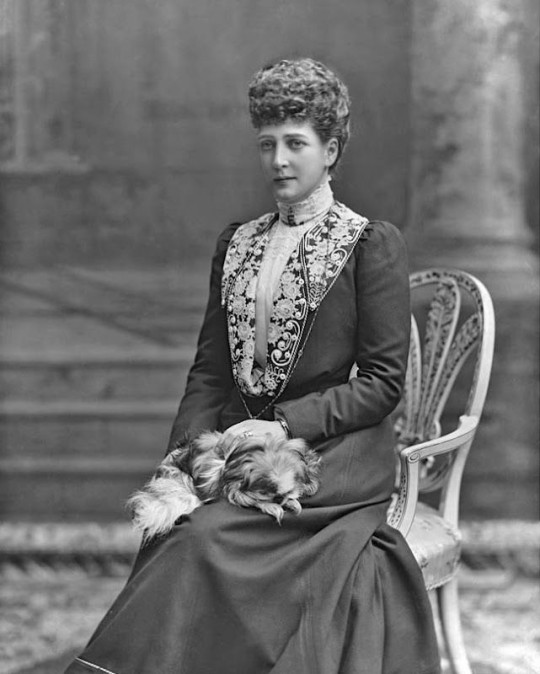
#1: Queen Alexandra of the United Kingdom – (nèe Princess Alexandra of Denmark, "Alix".
— She was beautiful, a warm and caring mother/grandmother, was popular as Princess of Wales and Queen Consort among of her people because of her good nature, and she supported many charities, including her own: "Alexandra Rose Day", founded by Queen Alexandra in 1912, this was a charity where flowers were being sold and all the money went to supporting Londoners in poverty. This was inspired by a priest in her native Denmark selling roses to raise money for those in need, Queen Alexandra brought the idea back to the United Kingdom. ❤✨
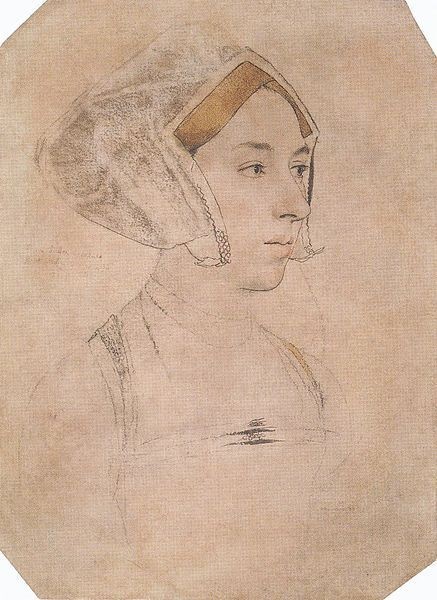
#2: Queen Anne Boleyn of England – (nèe Lady Anne Boleyn)
— She was intelligent, funny, caring and kind to all of people, and as her two years as Queen Consort she supported many charities, and even "gave alms to the poor, provided for widows, and even sewed shirts and smocks for the needy". She also helped with promoting new educational identities for monasteries, which were no longer under the protection of the Catholic Church. After only two years of being Queen Consort when she was said to have been 35 years old, she was executed after being imprisoned in the Tower of London for 17 days because she was accused of committing treason, but the true reason she was executed was because she failed to give King Henry VIII a male heir. ☹️💔

#3: Queen Marie Sophie of the Two Sicilies – (nèe Duchess Marie Sophie in Bavaria)
— She was beautiful, bright, and fierce. She was given the nickname the "Warrior Queen", the "Heroine of Gaeta" and the "modern Joan of Arc", rallying the troops, nursing the injured, feeding her forces at her own table and taunting Garibaldi's army from the battlements with the words; "Go ahead and shoot me. I will be where my men are". It was said of her that the Queen would "wipe your brow if you were wounded or hold you in her arms while you die". ❤️🔥👑
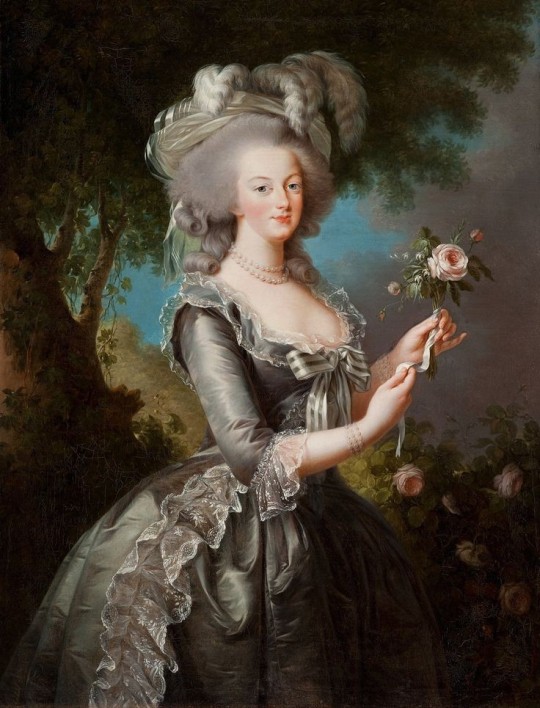
#4: Queen Marie Antoinette of France – (nèe Archduchess Marie Antoinette of Austria)
— She was honest, lovable, bold, a social butterfly who loved gambling, partying and extravagant fashions. Growing up she was closest with her sister, Maria Carolina, who was three years older, and with whom she had a lifelong close relationship. As Queen, Marie Antoinette was always unpopular, she spent lavishly, but her extravagance was only a minor cause of France's growing debt in the 1770-80s. Because of Louis XVI's indecisiveness, Marie played an increasingly prominent political role. But was very beloved for her charitable activities and patronage of the arts. She supported various charitable organizations and institutions, and she was also a benefactress of the poor. 💞🎀
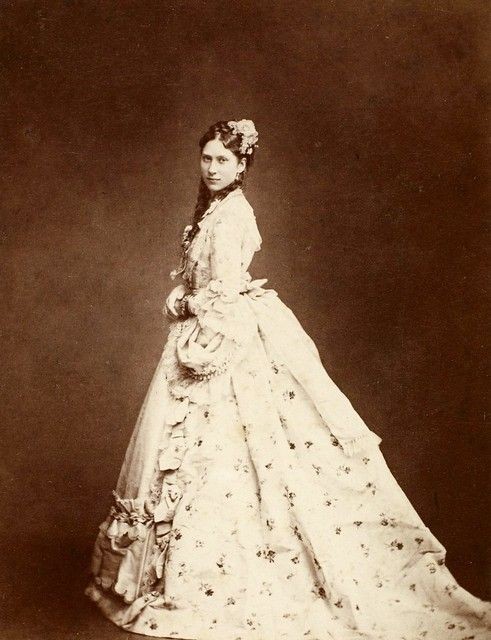
#5: Queen Lovisa of Denmark – (nèe Lovisa of Sweden)
— She was described as intelligent, with an ability to be natural, easy and friendly. And As Queen, she was mainly known for her many charity projects, an interest that she shared with her spouse. She did not care for ceremonial duties and public events, and lived a discreet life dedicated to her children and her interests in art, literature and charity. After a short tenure of only six years as Queen, she was widowed in 1912.
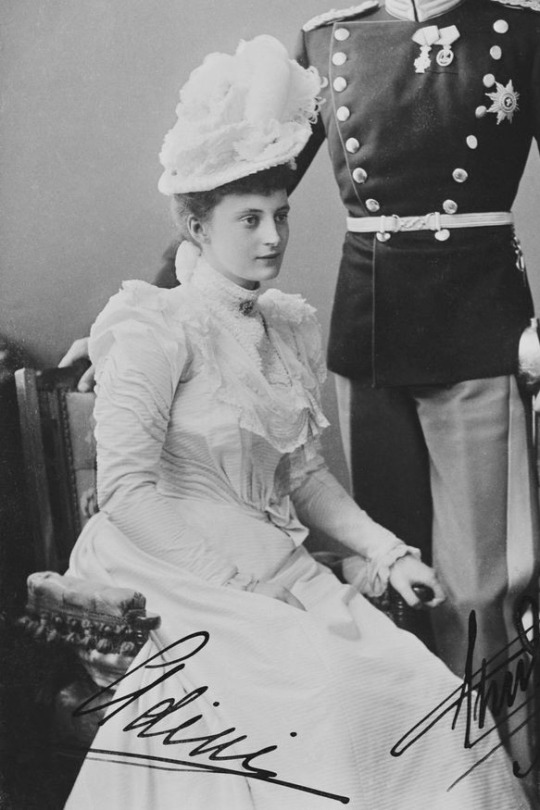
#6: Queen Alexandrine of Denmark – (nèe Alexandrine of Mecklenburg-Schwerin)
— She was reticent by nature. Her childhood was characterised by regular sporting activities, and from a young age she played the piano to a high standard. Her great interest in music stayed with her for her entire life and was passed on to her equally musical eldest son, Prince Frederik (IX). As of her first years as Queen, she had difficulty getting used to public attention, and she preferred to avoid the media limelight, but performed her functions in an exemplary manner. In the home her presence was crucial for the two boys, since Christian X was known for surrounding himself with a certain atmosphere of the barracks. Queen Alexandrine undertook extensive charity work until her death and was an avid golf player and photographer, who also loved doing needlework to a high standard. 💫
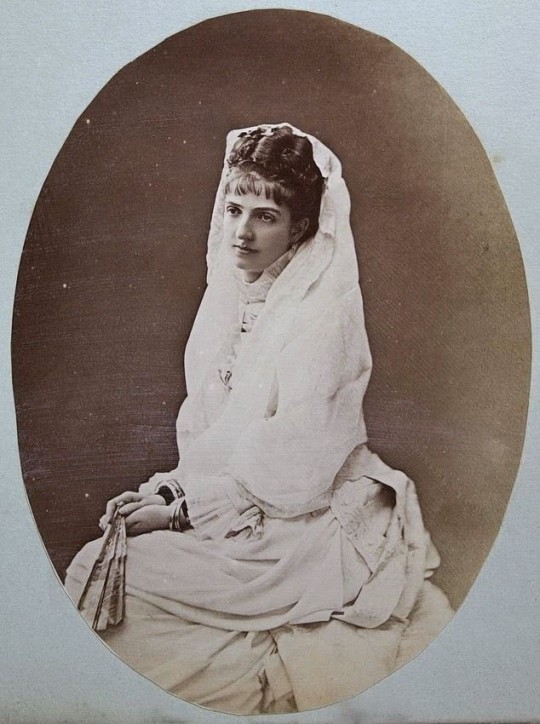
#7: Queen Margherita of Italy – (nèe Margherita of Savoy)
— She was described as sensitive, proud and with a strong force of will without being hard, as well as having the ability to be charming when she chose to. As to her appearance, she was described as a tall, stately blonde, but she was not regarded as a beauty. As Queen, she worked to protect the monarchy against republicans and socialists, and she gathered a circle of conservative intellectuals and artists known as the "Circolo della Regina" (Circle of the Queen) in her famous literary salon known as "Giovedì Della Regina" (Queen's Thursdays), where she benefited artists and writers.
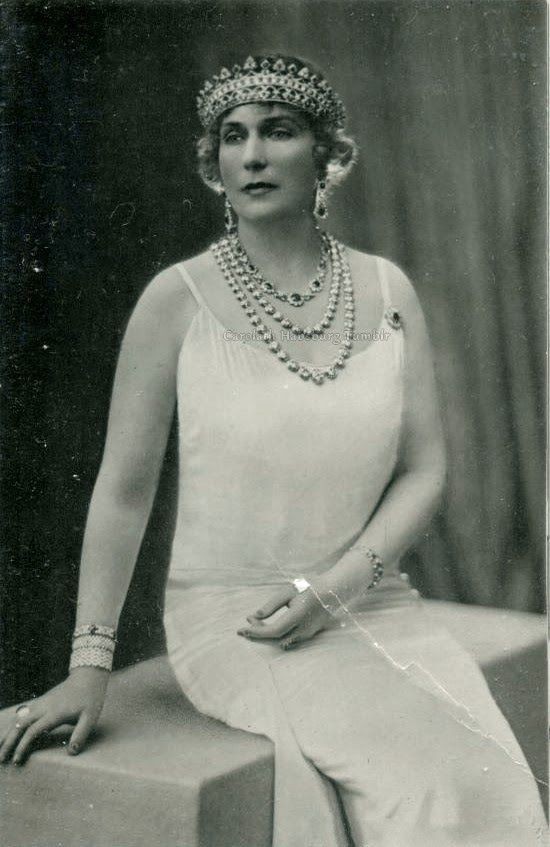
#8: Queen Victoria Eugenie of Spain – (nèe Princess Victoria Eugenie of Battenberg), "Ena".
— She was described as very kind but very strict and she devoted herself to work for hospitals and services for the poor, as well as to education. She also involved herself in the reorganization of the Spanish Red Cross. In 1929, the city of Barcelona erected a statue of her in a nurse's uniform in honour of her Red Cross work and since the the statue has been destroyed.
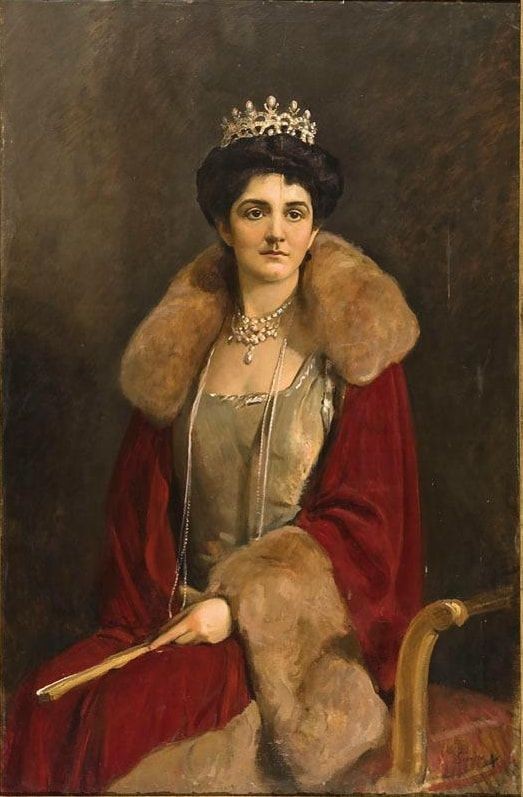
#9: Queen Elena of Italy – (nèe Elena of Montenegro)
— She was described as shy and reserved but also rather stubborn. Very attached to traditions, with a sensitive soul and a lively and curious mind, she was endowed with a strong love for nature: her favourite flower was the Cyclamen. She was a very tall woman of 180 cm (5'11). As Queen, her commitment to numerous charitable and welfare initiatives, which assured her great sympathy and popularity, was profuse. The Queen went well beyond mere charity: her evangelical spirit led her to practice every day the most genuine and most charitable love of neighbor.
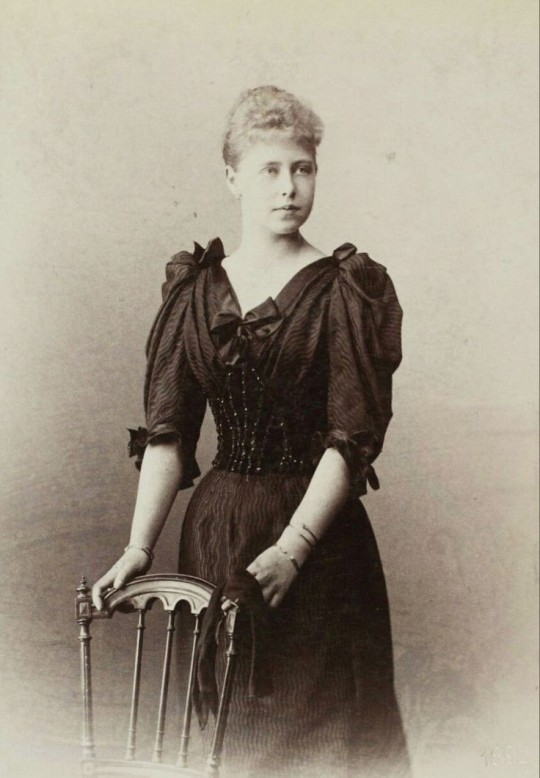
#10: Queen Marie of Romania – (nèe Princess Marie of Edinburgh), "Missy".
— She was described as very beautiful and high spirited. As a young girl, Marie was very close with her sisters, but mostly her sister Victoria Melita, they played many games with their father and Marie's mother, the Duchess of Edinburgh neglected Marie and her sisters' education, considering them not very bright or gifted. But in the fields of painting and drawing, Marie and her sisters had inherited her grandmother, Queen Victoria's talent. On October 11th, 1914, Marie and her husband Ferdinand were acclaimed as king and Queen in the Chamber of Deputies. Princess Anne Marie Callimachi, a close friend of Marie, wrote that "as Crown Princess, she had been popular; as Queen, she was more loved". Marie maintained a certain influence on her husband and the entire court, leading historian A. L. Easterman to write that "it was not Ferdinand, but Marie who ruled in Romania".
#answered ask#queen alexandra#alexandra of denmark#anne boleyn#queen marie sophie of the two sicilies#duchess marie sophie in bavaria#marie antoinette#queen lovisa of denmark#lovisa of sweden#queen alexandrine of denmark#alexandrine of mecklenburg-schwerin#queen margherita of italy#margherita of savoy#queen victoria eugenie of spain#princess victoria eugenie of battenberg#queen elena of italy#elena of montenegro#queen marie of romania#princess marie of edinburgh#informational
18 notes
·
View notes
Text
My soverain lord and fader, I recomande me to yowr good and gracieux lordship as humbly as I can, desiring to heere as good tydyngges of you and of your hye estat as ever did leige man of his soverain lord. And, sir, I trust to God that ye shal have now a companie comyng with my brother of Bedford that ye shal like wel in good feith as hit is do me wite, neverthelatter, my brother's mainy [retinue] have I seyn, which is right a tal meyny [retinue]. And so schal ye se of thaym that be of your other captaines leding, of which I sende you al the names in a rolle be the berer of this. Also so, sir, blessid be God, of the good and gracieux tydingges that ye have liked to send me word of be Herford your messager which were the gladdist that ever I mygt heve next your welfare, be my trouth, and, sir, with Godde's grace I shal sende all thise ladies as ye have commandid me, in al hast, beseching you of your lordship that I mygt wite how that ye wolde that my cosine of York [Joan Holland, dowager Duchess of York] shuld reule her, whether she shuld be barbid [dressed as a widow] or not as I have wreten to you, my soverain lord afore this time. And, sir, as touching Tiptot he shal be delivered in al hast, for ther lakkith no thing but shipping, which, with Goddes grace, shall be so ordeined for that he shal not tary. Also, sir, blessid be God, your gret ship the Grace Dieu is even as redy and is the fairest that ever man saugh, I trowe in good feith. And this same day therle of Devonshir my cosin maad his moustre [muster] in her and al other have her [there] moustre [mustered (?)] the same tyme that shall go to ye see [sea]. And, sir, I trowe ye have on [one] comyng toward you as glad as any man can be as fer as he shewith, that is the King of Scotts, for he thanketh God that he shal mow shewe be experience thentente of his good will be the suffrance of your good lordship. My soverain lord, more can I not write to your hynesse at this tyme, but yt ever I beseche you of your good and gracieux lordship as be my trouth my witting [knowingly] willingly I shal never deserve the contrary, that woot God, to whom I pray, to send yow al yt yowr hert desireth to his plaisance. Writen in your town of Hampton the xiiij day of May. Your trewe and humble liege man and sone H. G. [Henricus Gwalliae, or for Henry Prince de Galle.]
Letter written by Henry, Prince of Wales to his father, Henry IV, 14 May 1411(?) From: W. J. Hardy, The Handwriting of the Kings and Queens of England, The Religious Tract Society, 1893.
6 notes
·
View notes
Text
The problem is that there's an extreme paucity of primary sources on Katherine, which makes it difficult to manage a full length biography. Alison Weir's biography got quite a lot of negative reviews on the basis there was really not enough information on Katherine for a biography and she had to do a lot of guessing.
Katherine's father and first husband were both of very minor aristocratic status and not particularly wealthy or prominent. So, they were not mentioned by contemporary chroniclers and few of their families' letters or charters have been preserved.
A lack of primary sources is pretty typical for medieval mistresses. Little is also known of Rosamund de Clifford, Ida de Tosny, Biette de Cassinel, Alice Perrers, Odette de Champdivers, or Jane Shore and a number of famous medieval bastards, such as Geoffrey, Archbishop of York, and Joan, Lady of Wales, were born to women about whom we know nothing but their given names. Geoffrey's mother is identified is as a woman named "Ykenai" and Joan's mother is only named as "Clemence".
Why are there so few non-fiction books on Katherine Swynford? The most recent bio I know of is an Alison Weir book from like 10+ years ago. How are medieval historians not all over that? She should be as oversaturated as Anne Boleyn
29 notes
·
View notes
Text
*waves* this is my writing playlist in case anybody is interested in the most random tracks known to man.
Also, the post on Hywel ab Owain Gwynedd (featuring v good shit about Arthurian myth and the Mabinogion) will be up later tonight / early Friday morning once I translate my Welsh texts!!! Had to do some stuff yesterday and just have a tumblr detox. 🤷🏻♀️
#it me#bisexual disaster™️#sarah rambles#welsh myth#the mabinogion#arthurian legend#welsh mythology#arthuriana#mabinogion#hywel ab owain gwynedd#also doing a post on joan lady of wales but waiting for SOURCES#Spotify
6 notes
·
View notes
Text
"By the mid-1220s, relations between Gwynedd and England were amicable and royal officials met a number of times over the course of two years, presumably as a means of establishing a permanent agreement. Joan was the pre-eminent envoy during these years and in 1224 she was given safe passage to meet with the king [Henry III] to help lay the groundwork for a conference. Joan did not travel on her own in every instance as in 1226 it is recorded that she was accompanied by Llywelyn and Dafydd. It seems, however, that Joan’s personal contributions to peace negotiations in her role as political envoy in 1225 and 1226 were recognised by her brother. She was rewarded with the manors of Rothley in Leicestershire and Condover in Shropshire soon after her meetings with him. Later, in 1227 Joan was excused from paying a tallage tax on these manors, the king recommending to her tenants that they, instead, reimburse his sister with reasonable aid. It was also during this period, in 1226, that Henry offered to sponsor Joan’s legitimisation, which, too, may have been a symbol of royal friendship and support.
Louise Wilkinson argues that the sources suggest the gifts and support bestowed upon Joan by Henry are evidence of the familial bond felt between brother and sister and that Henry held Joan in high regard. This is certainly a reasonable assessment given the lifecycle identifiers used to describe Joan and her family in chancery records. Although the designation of ‘Lady of North Wales’ is used in close juxtaposition with that of Llywelyn’s title as ‘Prince of North Wales’ in examples from 1224 and 1226, it is her personal relationships that are used to clearly identify her. In 1224 she is referred to as sister of the king and wife of Llywelyn (Johanna Domina de Northwallia sorore Regis ac nuper uxor Lewlini Principis Northwall), whilst in 1226 when safe conduct was granted to her and her family, she is described simply as Llywelyn’s wife and the king’s sister (uxore ejus sorore Regis; uxorem suam sororem nostrum). In these instances, even the familial connections between the king and Llywelyn (Lewlino Principe Northwall’ fratre Reg’; dilectum fratrem Lewlinum principem Norwalliae) and Dafydd (filijs suis nepotibus Regis; filium suum nepotem nostrum) are emphasised. Joan’s status as Lady of North Wales is clearly recognised and such acts were issued because of her status. However, it seems that the lifecycle identifiers in these documents were employed as a means of emphasizing the personal nature of the relationships between the king of England and the family of the prince of Gwynedd, Joan being at the centre. That is to say, it seems that particular family relations, both natal and uxorial, played a large role in her successful dealings with the English Crown.
Further evidence of the bond between sister and brother appears from 1228 when Henry reclaimed the manors of Rothley and Condover as a likely consequence of inflamed hostilities between Llywelyn and Henry’s justicar, Hubert de Burgh (d. 1243). Although Joan lost ownership over the manors, Henry sanctioned the removal of her livestock and chattels situated at Condover and also ensured that the corn she had given instructions to be sown there remained in her possession. Rothley was restored to her later that year after she and her own officials met with Henry at Shrewsbury to initiate proceedings for another Anglo-Welsh truce. It is evident that Joan successfully negotiated an armistice given the cordial correspondence that subsequently passed between the prince and the king. Further, and most significantly, the Patent Rolls record that on 13 October 1228, Joan accompanied Dafydd when he paid homage to the king at Westminster on behalf of Llywelyn. It is likely that in this instance she appeared in all the capacities mother, wife and sister. However, it was most likely as queen that she officially stood; as the most pre-eminent member, and representative, of Llywelyn’s court in his absence."
Danna R. Messer, "The uxorial lifecycle and female agency in Wales in the twelfth and thirteenth centuries", PhD dissertation, Bangor University, 2014.
#I didn't know much about Joan's diplomatic role during her brother's reign so this was very interesting for me#joan lady of wales#henry iii#welsh history#historicwomendaily#women in history#english history#13th century#my post
14 notes
·
View notes
Text
"The manner in which the Iorwerth redaction also incorporated French loanwords into its text, and increased the number of the queen’s household officers from four to eight, is certainly suggestive of Joan’s personal prominence at Llywelyn’s court and her wider cultural influence within Gwynedd."
john gave all the angevin charisma, force of personality and braincells to his eldest daughter
5 notes
·
View notes
Text

Joan, Lady of Wales and Lady of Snowdon, also known by her Welsh name often written as Siwan (c. 1191/92 – February 1237) was the illegitimate daughter of King John of England, and was the wife of Llywelyn the Great, Prince of Wales (initially King of Gwynedd), effective ruler of all of Wales. Joan or Siwan in Welsh has been referred to as both "Lady of Wales" and "Princess of Wales".
#Joan of Wales#Lady of Wales#House Plantagenet#women in history#photo#photography#xii century#xiii century
2 notes
·
View notes
Photo





the granddaughters of henry ii and eleanor of aquitaine
#historyedit#history#eleanor of aquitaine#isabella of england#joan lady of wales#joan of england#matilda of saxony#matilda of england#eleanor of england#eleanor of castile#berengaria of castile#urraca of castile#blanche of castile#eleanor fair maid of brittany#malafda of castile#12th century#13th century#english history#british history#scottish history#spanish history#welsh history#our edits#by julia#german history#sicilian history#italian history#portuguese history
308 notes
·
View notes